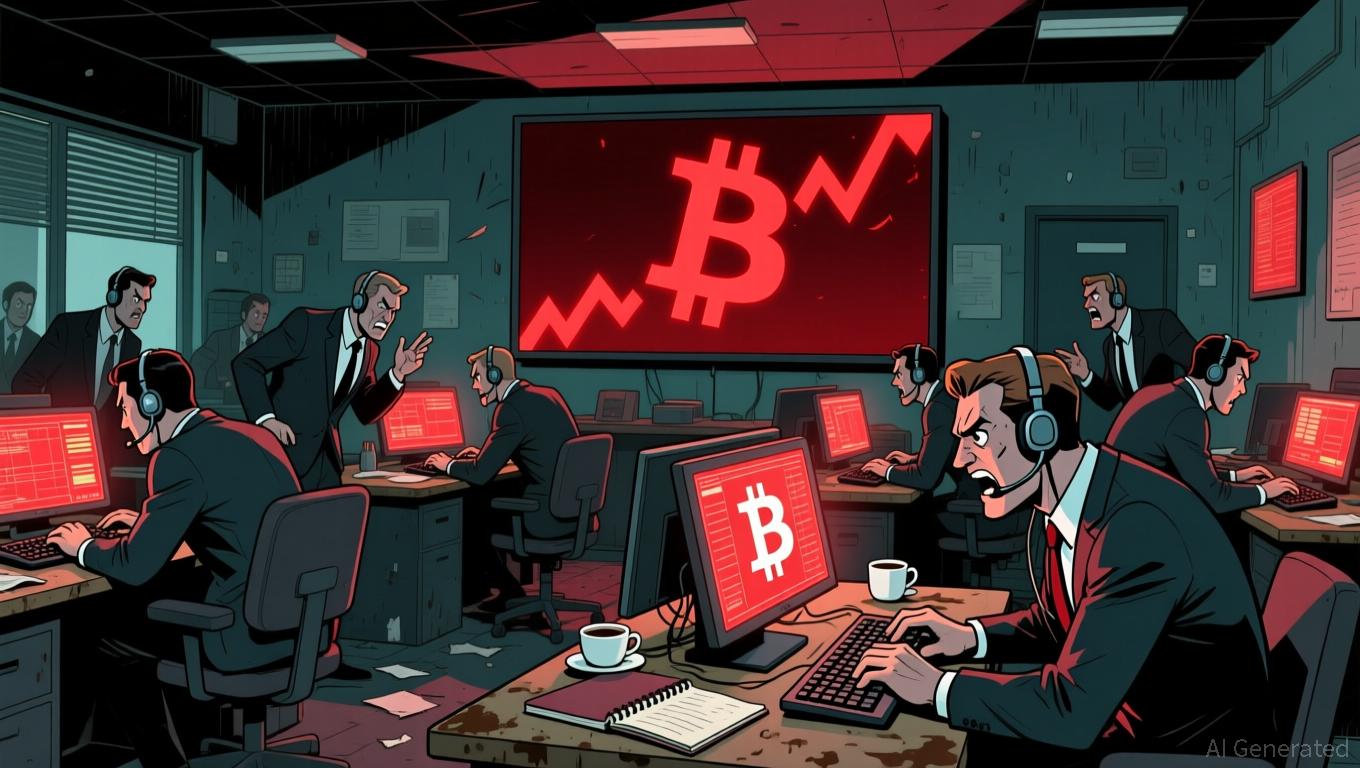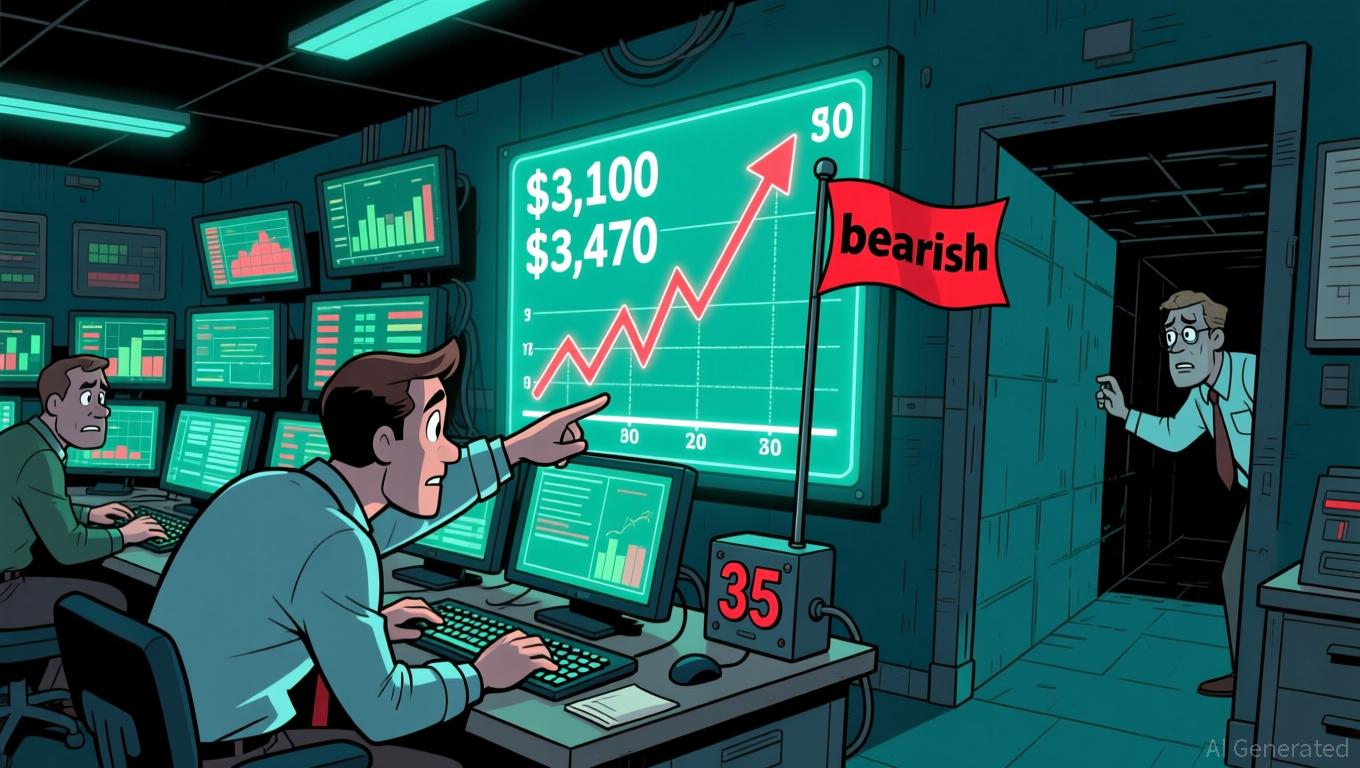Solana Experiences a Sharp 150% Decline: Causes, Impacts, and Potential Prospects
- Solana (SOL) plummeted 150% in 2025 due to smart contract vulnerabilities, scalability issues, and lack of exchange support. - Market declines aligned with broader crypto slumps, triggering liquidations as investors questioned Solana's unregulated risks. - Technical indicators confirm bearish trends, with projects like Bitcoin Munari planning 2027 chain migrations to reduce Solana's role. - Security partnerships (CredShields-Checkmarx) and 21Shares' TSOL ETF aim to stabilize the network through instituti
Key Drivers: Smart Contract Flaws and Investor Sentiment
The main driver behind Solana’s steep fall is its smart contract security environment.
These technical challenges are further complicated by the market’s response to Solana’s difficulties.
Impacts: Scalability Issues and Uncertainty in the Ecosystem
Solana’s scalability, once a major advantage, has become problematic. Its capacity to handle thousands of transactions per second has enabled projects like Bitcoin Munari to launch on the platform, but this performance comes with trade-offs. Industry analysts caution that Solana’s dependence on centralized components—such as its consensus process and validator setup—raises concerns about its long-term viability. As
The effects of these scalability problems are visible in technical market signals. SOL’s recent drop below its 50-week moving average (MA50) has confirmed a bearish outlook, with some analysts forecasting a possible slide to $105 if the downward trend continues. This instability has shaken the confidence of both individual and institutional investors, especially as projects like Bitcoin Munari consider moving to their own Layer-1 blockchains by 2027. Such migrations could further weaken Solana’s position as a core infrastructure, adding to its price volatility.
Prospects: Security Collaborations and Institutional Growth
Despite these setbacks, Solana’s ecosystem still presents attractive prospects for those prepared to manage the risks. A notable step forward is the partnership between CredShields and Checkmarx, aiming to incorporate AI-powered smart contract reviews into enterprise-level security systems. This collaboration reflects a growing awareness of the importance of Web3-specific security protocols, which could help prevent future breaches and rebuild trust among investors.
Institutional involvement also offers hope. The 21Shares Solana ETF (TSOL) has seen substantial capital inflows, with
Summary: Weathering the Volatility
Solana’s 150% value drop serves as a stark illustration of the crypto sector’s unpredictability and the vital importance of robust security in decentralized networks. While issues with smart contract safety and scalability have fueled the decline, the network’s resilience—shown by new security alliances, ETF launches, and strategic acquisitions—points to possible recovery paths. For investors, the challenge is to strike a balance between caution and opportunity: focusing on projects with thorough security checks, keeping an eye on institutional participation, and preparing for the unpredictable swings of this emerging market.
Disclaimer: The content of this article solely reflects the author's opinion and does not represent the platform in any capacity. This article is not intended to serve as a reference for making investment decisions.
You may also like
Bitcoin Updates Today: Is Crypto’s Intense Fear Signaling a Market Bottom or Just a Misleading Decline?
- Crypto Fear & Greed Index fell to 24, with Bitcoin consolidating between $103,000-$115,000 amid prolonged market anxiety. - Extended fear periods historically precede market bottoms, but traders warn the index often lags and misfires in volatile conditions. - Coinbase aims to stabilize markets with 24/7 altcoin futures, yet regulatory clarity and persistent ETF outflows remain critical factors.

Bitcoin News Update: Bitcoin ETFs See $2.96 Billion Outflow as November Optimism Wanes
- BlackRock's Bitcoin ETFs lost $523M in single-day outflows on Nov 17, marking fifth consecutive net redemptions totaling $2.96B for November. - Despite November's historical 41.22% Bitcoin price surge, ETF redemptions signal cooling institutional/retail demand with average investor cost basis at $89,600. - Michael Saylor's firm bought 8,178 BTC at $102k average price, while JPMorgan warned Bitcoin-heavy companies risk index delistings by 2026. - BlackRock's IBIT holds 3.1% of Bitcoin supply but NAV multi

Bitcoin Updates: ECB Advocates for Digital Euro While Bitcoin's Decline Faces Regulatory Barriers
- ECB President Lagarde reaffirmed Bitcoin's "worth nothing" stance, rejecting its inclusion in central bank reserves due to safety and regulatory risks. - Bitcoin fell below $90,000 (32% from October 2025 peak), mirroring April 2025's correction amid U.S. rate uncertainty and large holder sell-offs. - ECB prioritizes digital euro development, aiming for 2027 pilot and 2029 launch to enhance privacy and reduce reliance on foreign payment systems. - Despite short-term Bitcoin rebound (3.64% in 24 hours), an

Ethereum News Update: Altcoins Face Critical Juncture—December Turning Point May Spark Market Recovery or Downturn
- Altcoins like ETH, XRP , and ICP trade near critical technical levels as institutional investors monitor potential inflection points ahead of a possible December market rebound or collapse. - Ethereum remains fragile below key moving averages with RSI near oversold territory, while XRP faces a $2.07–$2.10 support test that could trigger further declines if broken. - Smaller-cap tokens show speculative activity amid consolidation, with ICP's $4.97 resistance and Bitcoin's $88,000 support level serving as
